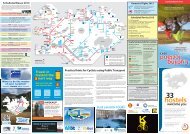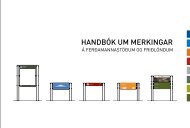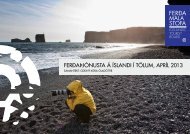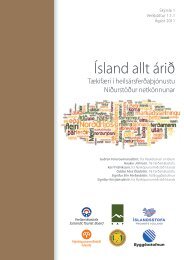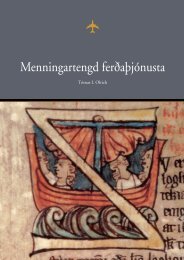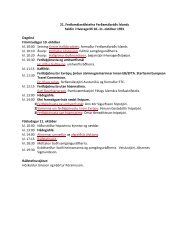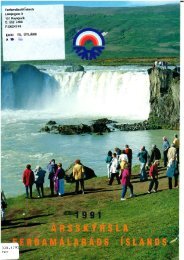Untitled
Untitled
Untitled
You also want an ePaper? Increase the reach of your titles
YUMPU automatically turns print PDFs into web optimized ePapers that Google loves.
For MacCannell the tourist is someone who is actively on the<br />
lookout for signs of touristic value, and it is by those signs that sights are<br />
identified as tourist attractions. The dilapidated house in front of you<br />
becomes transformed into a tourist attraction through the sign-post which<br />
informs you that it once was the residence of a historically very important<br />
and famous person. Without that sign-post, what you will look at is just a<br />
dilapidated house.<br />
Of particular importance for tourists and tourism, according to<br />
MacCannell, are signs of authenticity. Indeed, according to him all tourists<br />
in modern society embody a quest for authenticity. This quest is then<br />
matched by the development of a modern tourism industry trying to fill,<br />
and thereby construct, touristic sights (sites) with authenticity: real<br />
Icelandic nature, pure Icelandic water and the original Icelandic sweater.<br />
The crucial theoretical component in MacCannell´s account is that<br />
“tourist attractions are signs” (MacCannell 1976/1999, p. 109). In<br />
semiotics a sign is conceived of as “something that stands for something<br />
else” – and thus can be used fundamentally to lie with as Eco (1976, p. 7)<br />
half jokingly remarked. Practically everything can be conceived of as a<br />
sign: a word, a picture, a restaurant, a mountain, a piece of music, a smile.<br />
All share the common characteristics of signs in general. They stand for<br />
something else, and what that something else means needs to be addressed<br />
and decided by some act of interpretation. However, in semiotic theory the<br />
sign that stands for something else is actually a combination of two quite<br />
different but inseparable aspects; a physical dimension and one of<br />
meaning. As depicted by the formula of the sign itself:<br />
S (the signifier)<br />
Sign = -------------------<br />
s (the signified)<br />
A sign is a twofold being that for us linguistic animals consists of<br />
meaning (the signified) and materiality (the signifier). The way we<br />
understand and make sense of signs, how we interpret them, is then a<br />
function of how we glue signifier and signified together in language. What<br />
your eyes will actually meet when you read a tourist brochure is only ink<br />
on paper, that is, pure material signifiers. Nevertheless, they will also be<br />
meaningful for you, that is, they will simultaneously appear also as<br />
signified, i.e. that you are able to understand, and maybe use as guidance<br />
towards your next tourist attraction. Once there, when driving a super-jeep<br />
nearby or on Vatnajökull you are again surrounded by nothing but pure<br />
22



